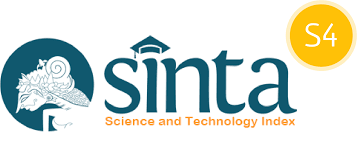Implementasi Machine Learning Dengan Metode Text Mining Pada Twitter
DOI:
https://doi.org/10.29408/jit.v7i1.23734Keywords:
Complaints, Indihome, Text Mining, TwitterAbstract
Currently PT. Telkom Indonesia (Indihome), uses the role of social media as a form of concern for its customers to handle complaints. Tweets from indihome customers on social media twitter are handled by the customer service division of Indihome. The manual of the categorization process carried out by the customer service division of Indihome on every narration of the "complain" complaint tweet that goes to @indihome twitter, makes the process considered inefficient. The purpose of this research is to provide solutions related to the problem of categorizing complaint tweets and to develop tools that can extract the narration of "complain" tweets in Indonesian. The research method used is comparative. On the other hand, gataframework and rapidminer tools are also used in this research to assist in preprocessing and cleaning of datasets to help create corpus and sentiment analysis. The total dataset after cleansing and preprocessing is 1,510. Based on the method proposed in this study on the Support Vector Machine classification algorithm, the highest category was found to have 82.42% accuracy, 75.33% precision, and 98.75% recall with an AUC of 0.826References
K. Sosial and D. A. N. Kinerja, “Metadata, citation and similar papers at core.ac.uk 1,” vol. 2, no. 1, pp. 1–118, 2009.
Novianti, “Pengaruh Kualitas Jaringan Internet Terhadap Kepuasan Pelanggan Indihome,” pp. 1–59, 2020, [Online]. Available: http://repository.umpalopo.ac.id/id/eprint/156.
A. V. Sudiantoro et al., “Analisis Sentimen Twitter Menggunakan Text
Mining Dengan Algoritma Naive Bayes Classifier,” Din. Inform., vol. 10, no. 2, pp. 398–401, 2018.
I. A. Paramitha, “Tinjauan Pustaka Tinjauan Pustaka,” Conv. Cent. Di Kota
Tegal, pp. 6–37, 2017.
M. Kurniasih, “Bab Ii Landasan Teori,” J. Chem. Inf. Model., vol. 53, no. 9, pp. 8–24, 2018.
S. R. I. Rezeki, “Penggunaan Sosial Media Twitter dalam Komunikasi Organisasi (Studi Kasus Pemerintah Provinsi Dki Jakarta Dalam Penanganan Covid-19),” J. Islam. Law Stud., vol. 04, no. 02, pp. 63–78, 2020.
F. Fathonah and A. Herliana, “Penerapan Text Mining Analisis Sentimen Mengenai Vaksin Covid - 19 Menggunakan Metode Naïve Bayes,” J. Sains dan Inform., vol. 7, no. 2, pp. 155–164, 2021, doi: 10.34128/jsi.v7i2.331.
F. Fathonah and A. Herliana, "Penerapan Text Mining Analisis Sentimen Mengenai Vaksin Covid – 19 Menggunakan Metode Naïve," Jurnal Sains dan Informatika, vol. 7, no. 2, p. 155 – 164 , 2021.
E. D. Sikumbang, "Penerapan Data Mining Penjualan Sepatu Menggunakan Metode Algoritma Apriori," Jurnal Teknik Komputer , vol. 4, no. 1, p. 156 – 161 , 2018.
H. F. Putro, R. T. Vulandari, and W. L. Y. Saptomo, “Penerapan Metode Naive Bayes Untuk Klasifikasi Pelanggan,” J. Teknol. Inf. dan Komun., vol. 8, no. 2, 2020, doi: 10.30646/tikomsin.v8i2.500.
R. Y. Hayuningtyas, “Penerapan Algoritma Naïve Bayes untuk Rekomendasi Pakaian Wanita,” J. Inform., vol. 6, no. 1, pp. 18–22, 2019, doi: 10.31311/ji.v6i1.4685.
M. A. Hasanah, S. Soim, and A. S. Handayani, “Implementasi CRISP-DM Model Menggunakan Metode Decision Tree dengan Algoritma CART untuk Prediksi Curah Hujan Berpotensi Banjir,” J. Appl. Informatics Comput., vol. 5, no. 2, pp. 103–108, 2021, doi: 10.30871/jaic.v5i2.3200.
E. Sutoyo and M. A. Fadlurrahman, “Penerapan SMOTE untuk Mengatasi Imbalance Class dalam Klasifikasi Television Advertisement Performance Rating Menggunakan Artificial Neural Network,” J. Edukasi dan Penelit. Inform., vol. 6, no. 3, p. 379, 2020, doi: 10.26418/jp.v6i3.42896.
Dewani, Andini and Aulia, “Pengaruh Kualitas Jaringan IndiHome Terhadap Customer Experience,” Semin FORTEI 2019, no. 1, pp. 67-72, 2019
Mailo, F. F., & Lazuardi, L. (2019). Analisis Sentimen Data Twitter Menggunakan Metode Text Mining Tentang Masalah Obesitas di Indonesia. Journal of Information Systems for Public Health, 28-36.
isfahani, F. A., & Mubarok, R. (2021). ANALISIS SENTIMEN PENGGUNA TWITTER TERHADAP KEBIJAKAN PEMBERLAKUAN PEMBATASAN SOSIAL BERSKALA BESAR (PSBB) DENGAN METODE NAÏVE BAYES. Jurnal Siliwangi Seri Sains dan Teknologi, 19-24.
Fani, S. M., Santoso, R., & Suparti. (2021). PENERAPAN TEXT MINING UNTUK MELAKUKAN CLUSTERING DATA TWEET AKUN BLIBLI PADA MEDIA SOSIAL TWITTER MENGGUNAKAN K-MEANS CLUSTERING. JURNAL GAUSSIAN, 583-593.
Lestari, T. P. (2022). Analisis Text Mining pada Sosial Media Twitter Menggunakan Metode Support Vector Machine (SVM) dan Social Network Analysis (SNA). Jurnal Informatika Ekonomi Bisnis, 65-71 .
Hermawan, A., Jowensen, I., Junaedi, & Edy. (2023). Implementasi Text-Mining untuk Analisis Sentimen pada Twitter dengan Algoritma Support Vector Machine. Jurnal Sains dan Teknologi, 129-137.
Downloads
Published
How to Cite
Issue
Section
License
Semua tulisan pada jurnal ini menjadi tanggung jawab penuh penulis. Jurnal Infotek memberikan akses terbuka terhadap siapapun agar informasi dan temuan pada artikel tersebut bermanfaat bagi semua orang. Jurnal Infotek ini dapat diakses dan diunduh secara gratis, tanpa dipungut biaya sesuai dengan lisense creative commons yang digunakan.
Jurnal Infotek is licensed under a Creative Commons Attribution 4.0 International License.
Statistik Pengunjung




